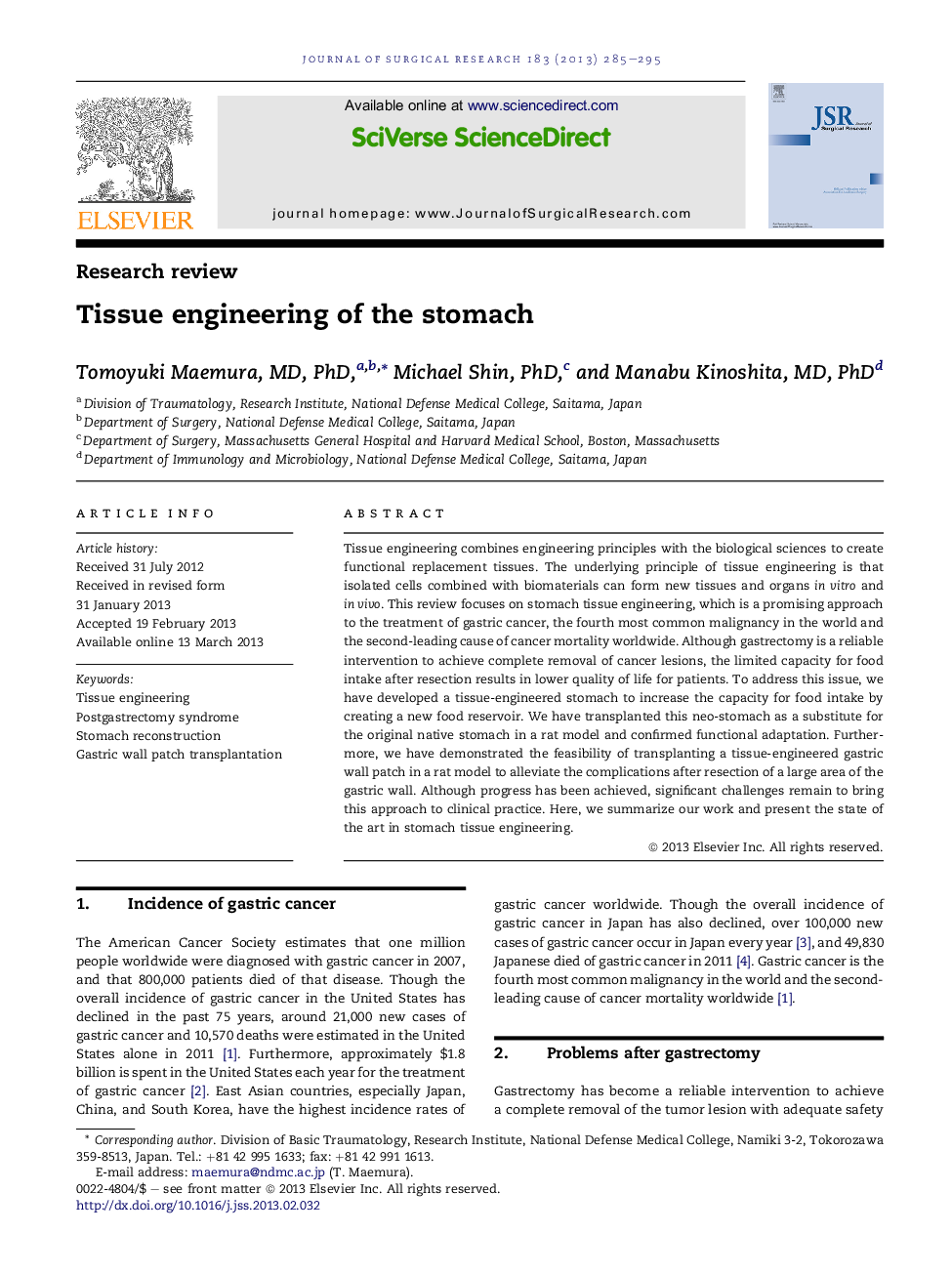| Article ID | Journal | Published Year | Pages | File Type |
|---|---|---|---|---|
| 6254354 | Journal of Surgical Research | 2013 | 11 Pages |
Tissue engineering combines engineering principles with the biological sciences to create functional replacement tissues. The underlying principle of tissue engineering is that isolated cells combined with biomaterials can form new tissues and organs in vitro and in vivo. This review focuses on stomach tissue engineering, which is a promising approach to the treatment of gastric cancer, the fourth most common malignancy in the world and the second-leading cause of cancer mortality worldwide. Although gastrectomy is a reliable intervention to achieve complete removal of cancer lesions, the limited capacity for food intake after resection results in lower quality of life for patients. To address this issue, we have developed a tissue-engineered stomach to increase the capacity for food intake by creating a new food reservoir. We have transplanted this neo-stomach as a substitute for the original native stomach in a rat model and confirmed functional adaptation. Furthermore, we have demonstrated the feasibility of transplanting a tissue-engineered gastric wall patch in a rat model to alleviate the complications after resection of a large area of the gastric wall. Although progress has been achieved, significant challenges remain to bring this approach to clinical practice. Here, we summarize our work and present the state of the art in stomach tissue engineering.
